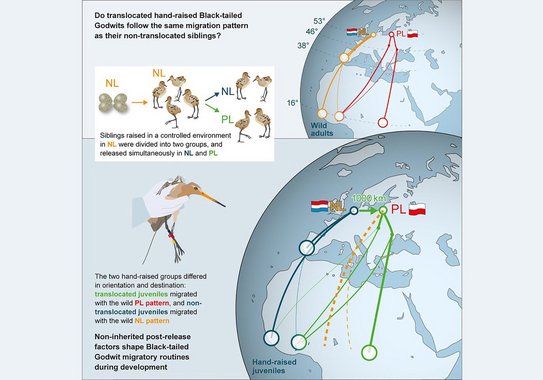Jelle Loonstra, Mo Verhoeven, Christiaan Both and Theunis Piersma conducted an experiment in which they showed that the migration of Black-tailed Godwits is not just shaped by genes.
The team collected Black-tailed Godwit eggs from fields in the southwest of Friesland where their chances for survival were quite low. The Godwits were hand-raised until the juveniles were able to fly.
The birds were then separated into two groups. Siblings were intentionally put in different groups. Just in time for migration, the birds were released. One group was released in Friesland, the other one at the same time in eastern Poland. In order to track them on their way to Africa, all birds were outfitted with transmitters.
The analysis of the tracking data showed that the originally-Dutch birds that were transported to Poland did not only take another route than their siblings, but also wintered in a different place in Africa.
This showed that the environment has a major influence on the route that Black-tailed Godwits take. However, it is not clear how exactly they learn their route. This question will be the subject of a follow-up study.
The study was recently published in Current Biology. You can find a link to the article below.
Dutch filmmaker Herman Zeilstra made a half-hour long documentary on this study. He followed the authors all the way from the collection of the Godwit eggs in the field to their release in Friesland and eastern Poland. You can find the link to the YouTube video below.
